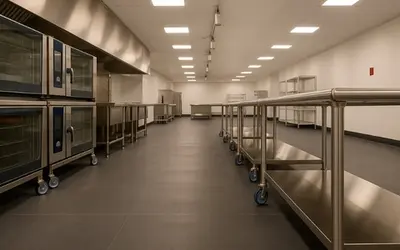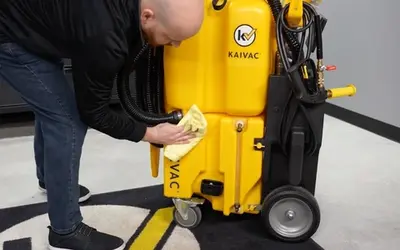FAQ: ATP Measurement for Cleaning Validation

Since the pandemic, virtually all industries and organizations have focused on protecting the health of building users by implementing hygienic cleaning methods. However, we still often overlook the need to test surfaces after they have been cleaned to ensure the effectiveness of the cleaning process. Fortunately, a rapid ATP measurement system produces results in less than 15 seconds, helping cleaning managers to make real-time decisions to improve cleaning effectiveness. Without further ado, here’s our FAQ about ATP measurement.
What is ATP?
Adenosine triphosphate (ATP) bioluminescence measurement systems measure relative light units (RLUs) on a surface. The higher the RLU, the higher the ATP. When used in professional cleaning, these systems help determine the cleanliness of a surface, providing very rapid results. A high ATP reading suggests that a surface may have a high level of microbial contamination. A low level would indicate just the opposite, that the surface is relatively clean, with few contaminants that might harm human health.
What is a low and what is a high ATP reading?
The measuring systems can vary based on the manufacturer; however, each manufacturer should provide a guide indicating what the readings mean. For example, at least one popular system provides the following readings:
- 0-10 is pass, meaning the surface is clean and safe.
- 11-30 is caution, the surface should be recleaned.
- 31 or above is fail, the surface is likely contaminated.
Does the ATP monitor tell what contaminants are on a surface?
No. Use the readings as a warning sign that contaminants could be on a surface. This is especially true if the reading is high.
Are ATP readings always correct?
Not always. After a surface has been cleaned, if chemical residue is left on the surface, the results could be skewed. There is also the possibility that the swab is touched or becomes contaminated before or during use.
Is there a way to get the most precise ATP reading?
Yes. Instead of just swabbing one area of a surface, swab several areas of the same surface. For instance, if we are swabbing a tabletop, swab five different spots in the immediate area. Add the results together and divide by five. Now you will have an average ATP reading for the entire tabletop.
Are there conditions that can impact an ATP reading?
Temperature can affect test results. If a surface is cold or hot, it can skew the reading. Room temperature should be about 70 degrees Fahrenheit. Also, it the surface is in direct sunlight that could impact the reading.
What if we reclean a surface and it still gets a high ATP reading?
This most likely means that the cleaning tools or solutions used are not proving effective. In most cases, the problem is the tools. Many times, when using a cleaning cloth or a mop, it is the cloth, mop, or mop water that is contaminated. This can even happen if the cloth or mops have been washed.
The Assurance that a Surface is Clean
Cleaning surfaces properly, using the right tools and cleaning solutions, should result in a passing ATP reading, and that is what facility managers and cleaning supervisors must always look for to keep building occupants safe. Bookmark this ATP FAQ to come back refresh your knowledge at any time.
Related Posts

Floor Cleanliness and Food Safety Scores
Poorly maintained floors are unsafe and unsanitary. They hold standing water, harbor pests, and cause slip, trip, and fall accidents. Here’s how to improve floor care and your food safety scores.
Read more
Preventive Maintenance for Your No-Touch Cleaning® System
Your Kaivac No-Touch Cleaning system makes restroom maintenance fast and easy. Keeping your No-Touch Cleaning system in good working order is also fast and easy. Kaivac makes performing preventative maintenance and troubleshooting potential issues simple. No special equipment or technical expertise required.
Read more
Beyond the Restroom: Kaivac for Fast, Easy, and Complete Kitchen Floor Care
You already know and trust Kaivac for restroom care. Our No-Touch Cleaning® systems make the unpleasant task of servicing restrooms fast, easy and complete. But did you know Kaivac has cleaning machines for every kind of floor?
Read more